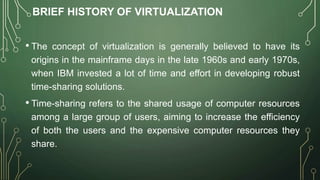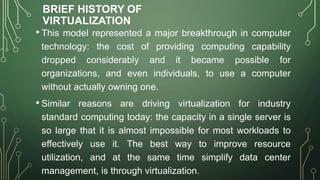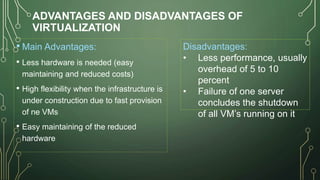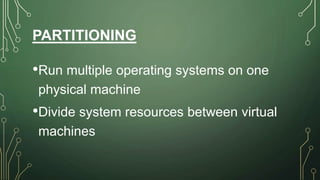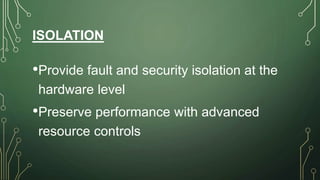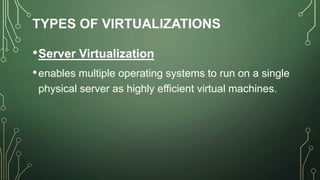This document discusses virtualization and virtual machines. It begins with defining virtualization as using software to create virtual versions of hardware components like servers, storage, and networks. This allows multiple virtual machines to run on a single physical machine. The document then covers the history and advantages of virtualization, types of virtualization like server, desktop and network virtualization. It discusses popular virtualization software like VirtualBox and VMware and how to use virtual machines. Benefits of virtualization mentioned are reduced costs, faster provisioning, disaster recovery and simplified management. Requirements for running virtual machines and when virtualization makes sense for companies are also summarized.




